Your living room is small—not a problem, a challenge. And honestly, with a few clever moves, you can make it feel bigger, brighter, and way more stylish without knocking down a single wall. Ready to turn your mini lounge into a major moment? Let’s do this.
1. Float the Furniture, Don’t Hug the Walls
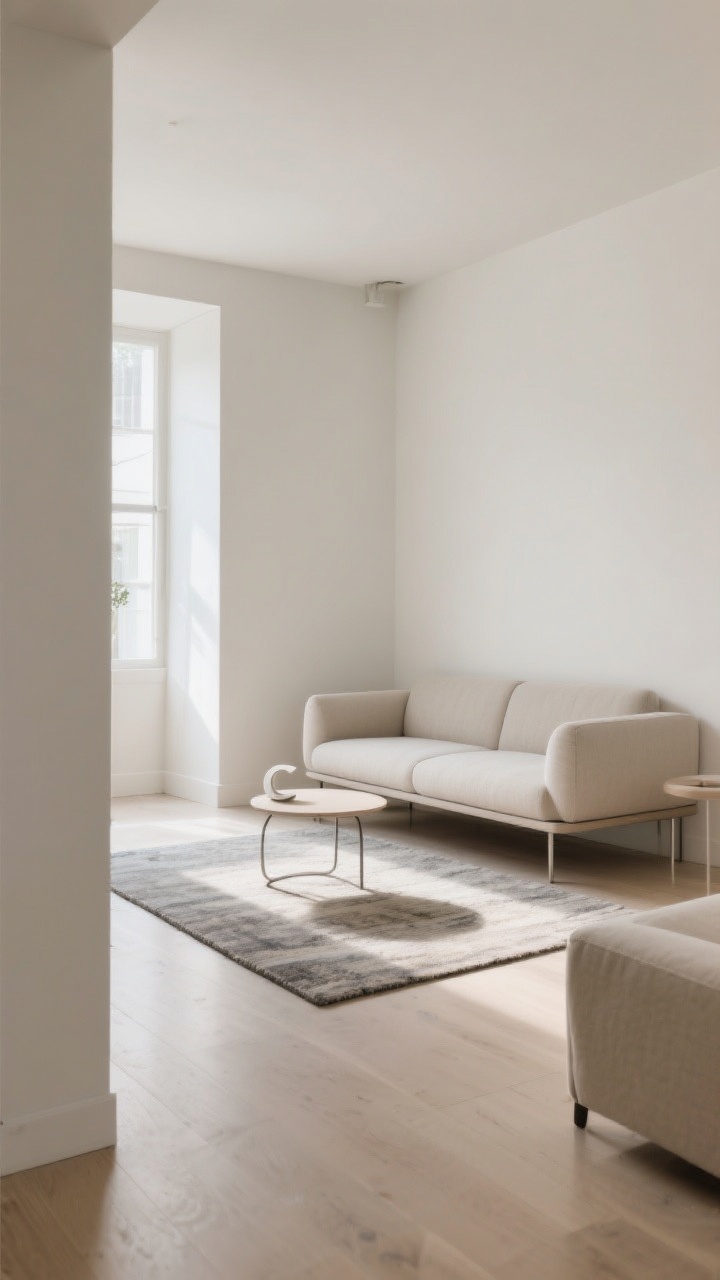
Step one: stop pushing everything against the walls. It feels logical, but it actually makes the room look smaller. Floating your sofa or adding a small rug to define a zone gives your space purpose and depth.
Try This
- Use a compact rug to anchor the main seating area—yes, even in a tiny room.
- Choose a slim sofa with exposed legs so you can see under it (visual space = magic).
- Add a petite side table instead of a bulky coffee table—nests or C-tables are clutch.
FYI: A clear path through the room makes it feel bigger, so leave a few inches between furniture and walls.
2. Go Vertical With Shelves and Drapes
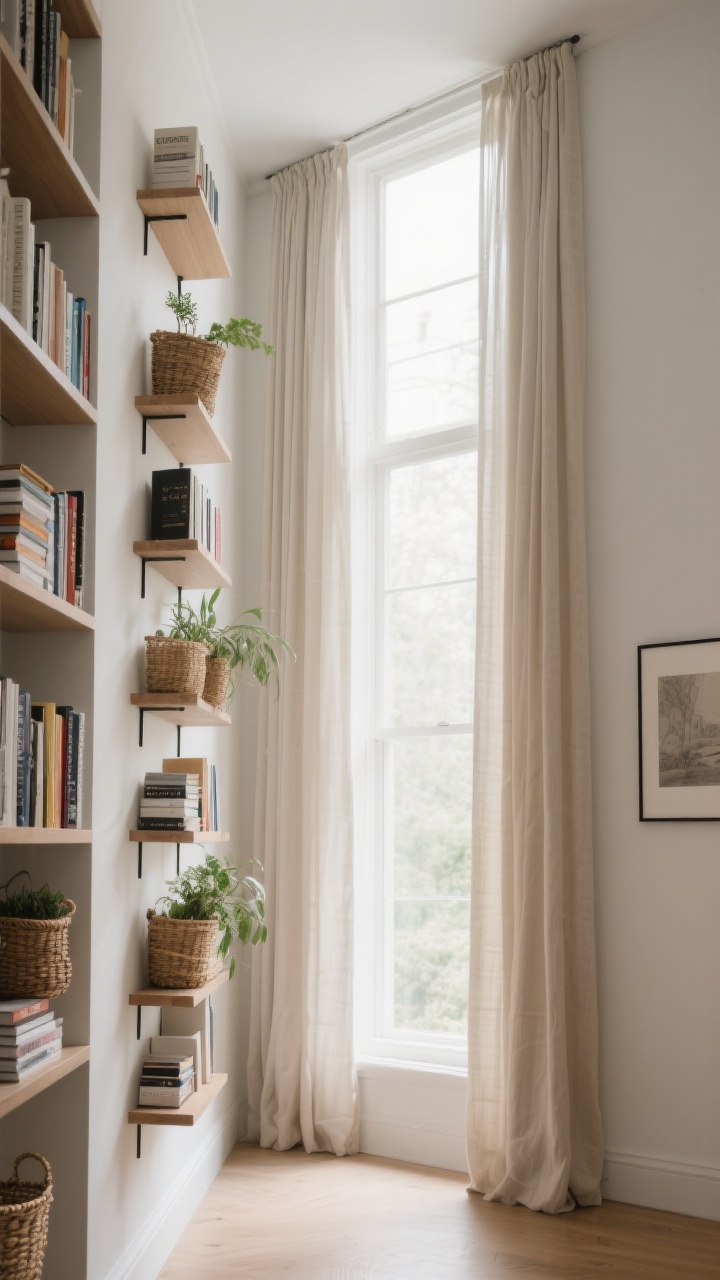
Your walls are basically free real estate. Use them. Tall bookcases, wall-mounted shelves, and ceiling-height curtains draw the eye up and make the room feel taller.
Height Hacks
- Hang drapes high and wide: Mount rods 6–12 inches above the frame and extend past the sides.
- Stack storage with narrow, tall shelving to display books, baskets, and plants.
- Try a gallery wall that climbs, not sprawls—think vertical columns of art.
Bonus: Long drapes in a light fabric soften the room and give that “designer did this” vibe.
3. Keep a Light Palette (But Don’t Fear Contrast)
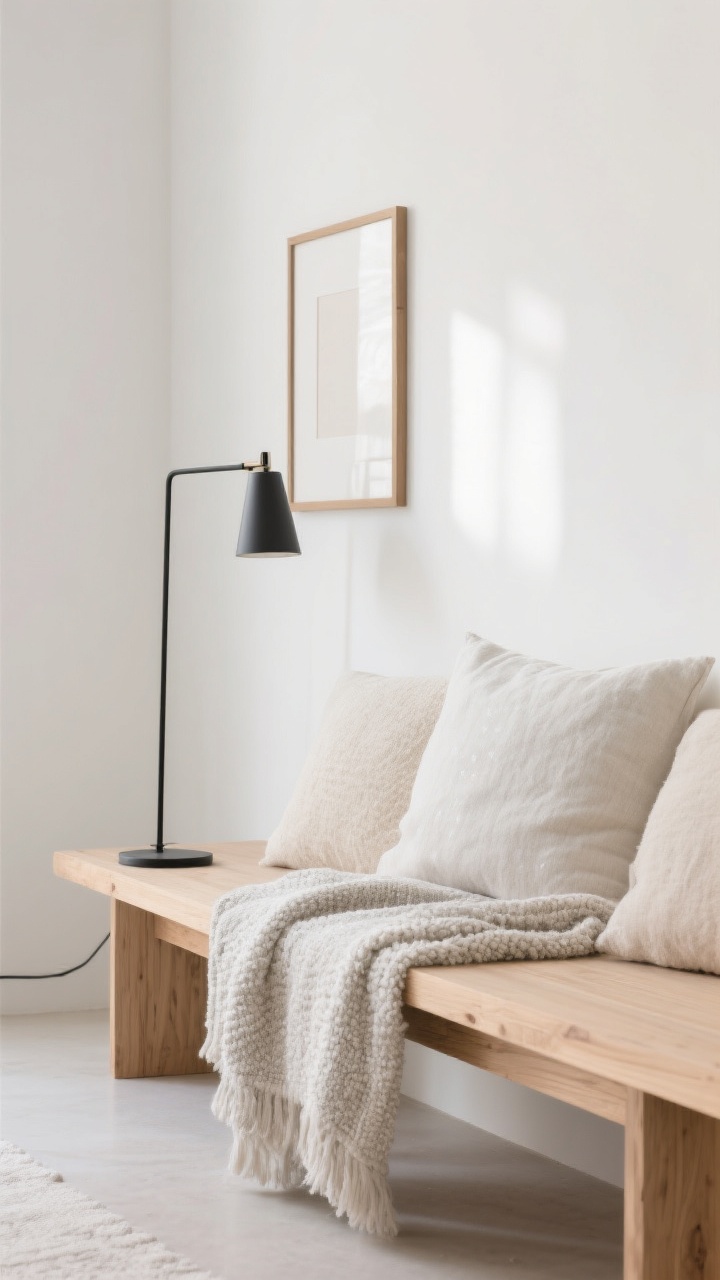
Light colors bounce light around, which we love, but a flat room is a boring room. Aim for light, airy neutrals with pops of contrast so things don’t look washed out.
Palette Play
- Walls: Soft white, creamy beige, or pale gray.
- Contrast: Add black or charcoal with frames, lamps, or a slim coffee table.
- Texture: Mix linen, boucle, and wood to prevent the “rental white box” effect.
Pro tip: Choose a single wood tone (light oak or walnut) and repeat it to create cohesion.
4. Mirror, Mirror: Your Secret Space Expander
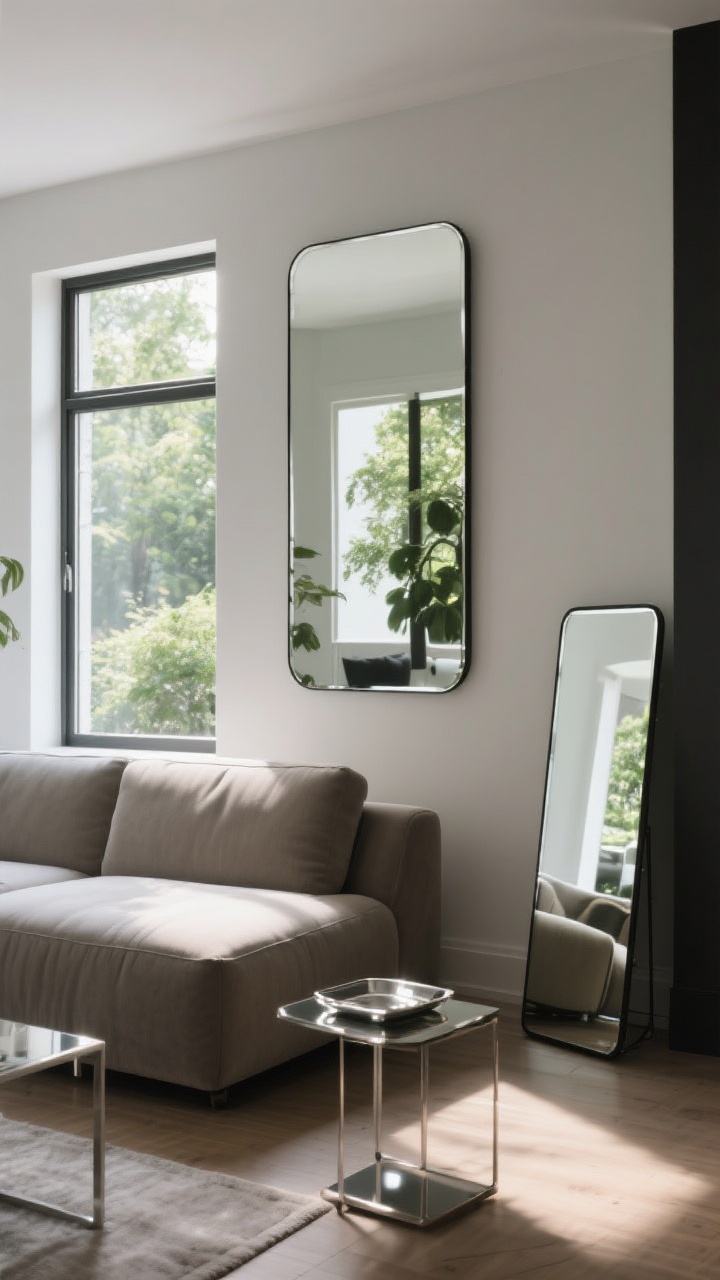
Mirrors are basically interior design cheating. Place a large mirror opposite a window to reflect light and views, or use a gallery of smaller mirrors for sparkle without overwhelm.
Placement Ideas
- Over the sofa with a slim frame for a clean, modern look.
- Leaning floor mirror in a corner to open up dark zones.
- Mirrored furniture in tiny doses (like a tray) for shine without glare.
IMO, one big mirror usually beats three small ones. Less busy, more impact.
5. Go Multipurpose or Go Home
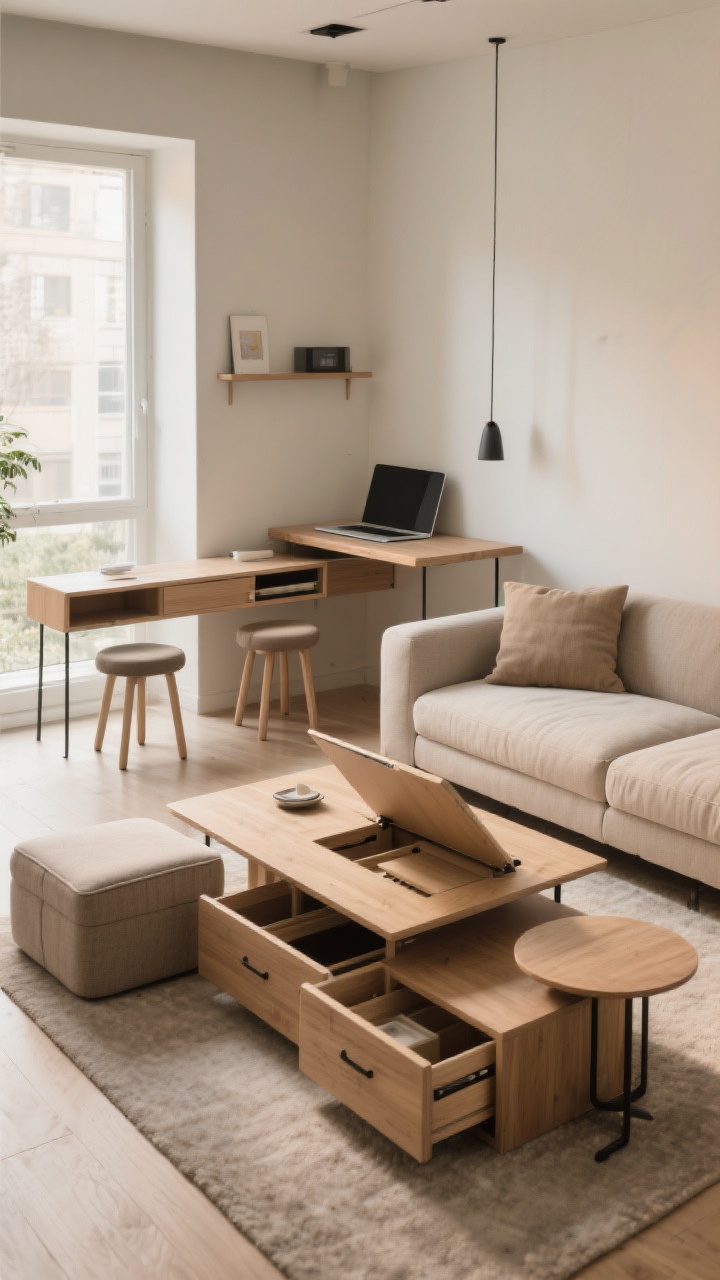
Every piece should pull double duty. Think storage ottomans, nesting tables, and benches with hidden compartments. You’ll thank yourself when guests come over and you actually have a place for the extra throws and remotes.
Smart Swaps
- Storage coffee table instead of a solid block—lifts or drawers for the win.
- Slim console behind the sofa that acts as a desk when needed.
- Stools that tuck under tables—pull them out when you need more seating.
Remember: Too many tiny items can feel cluttered. Pick a few heroes you’ll actually use.
6. Layer Lighting Like a Designer
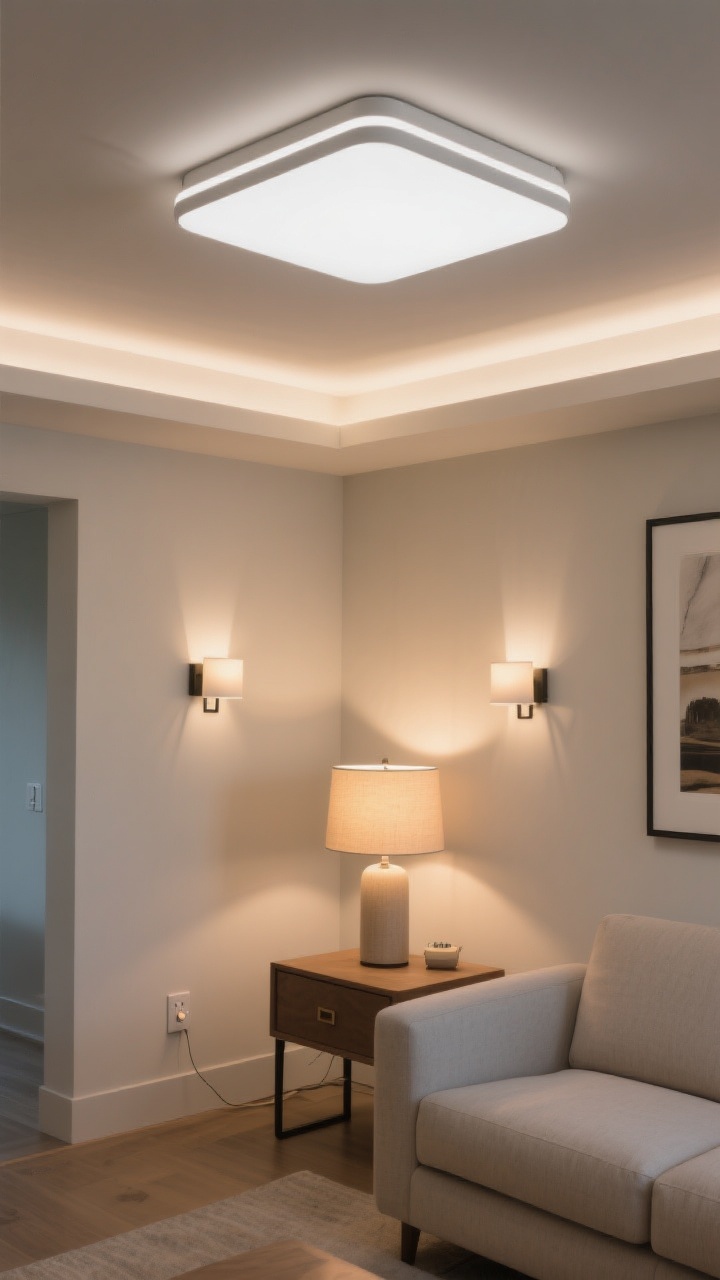
Overhead glare isn’t doing your room any favors. Create a cozy, luxe feel with layered lighting: one overhead, one mid-level, and one low. It’s an instant glow-up.
Light It Right
- Ceiling light: Flush or semi-flush fixture—sleek and bright but not harsh.
- Wall sconces: Plug-in sconces free up floor space and add style.
- Table or floor lamps: Warm bulbs (2700–3000K) = flattering, not hospital chic.
Dimmer switches? Yes, always. Control is everything.
7. Curate, Don’t Clutter

Small spaces love personality—but not chaos. Edit your decor so everything feels intentional. Group items in threes, vary heights, and keep some surfaces clean for breathing room.
Styling Shortcuts
- Tray it: Corral remotes, candles, and coasters on a single tray so it feels neat.
- Books + object + plant: The holy trinity of shelf styling. Done.
- One statement piece per zone—oversized art, a sculptural lamp, or bold vase.
Less stuff = more style. If it doesn’t spark joy or serve a purpose, you know the drill.
8. Choose Shapes That Flow
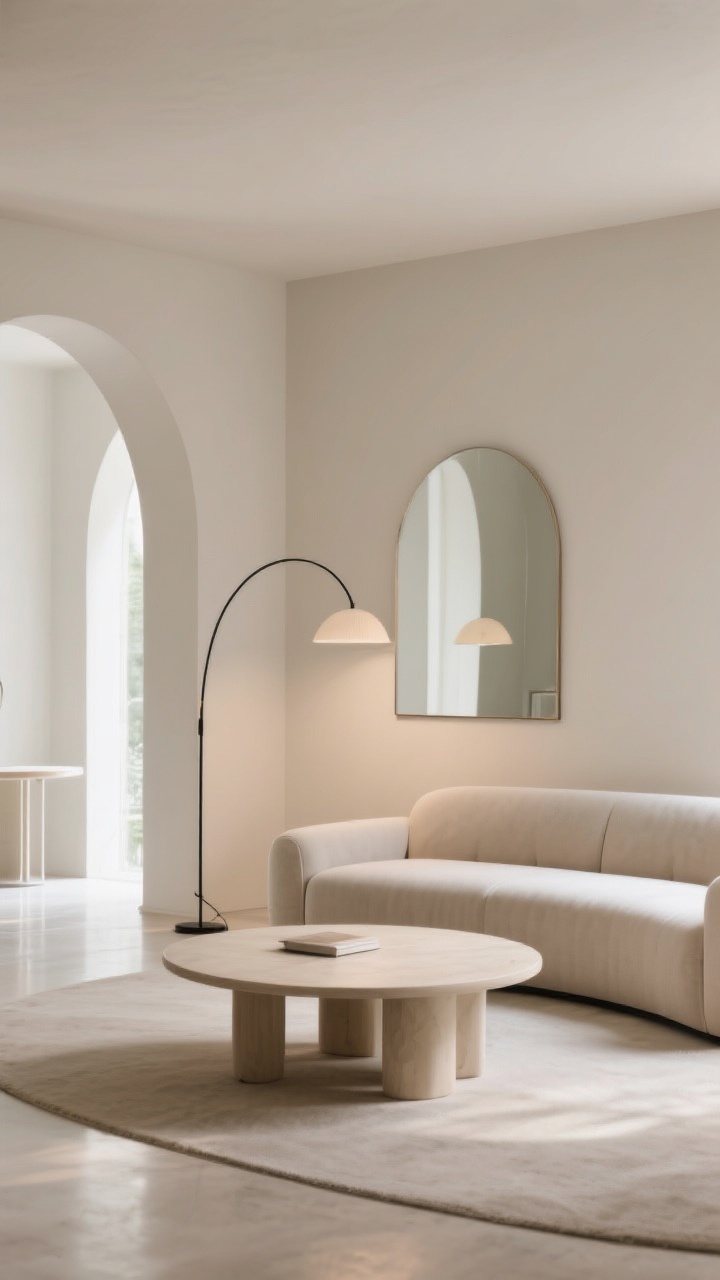
When floor space is precious, sharp corners can feel like traffic cones. Mix in curved shapes—round coffee tables, arched lamps, soft-edge sofas—to keep the eye moving and the room feeling calm.
Layout Wins
- Round or oval coffee tables to ease circulation.
- Arched mirrors or lamps to add height and softness.
- Low-profile sofa with a slim arm to maximize seating without bulk.
And don’t sleep on a small corner accent chair. It fills negative space without crowding.
9. Add Life With Plants (The Easy Kind)
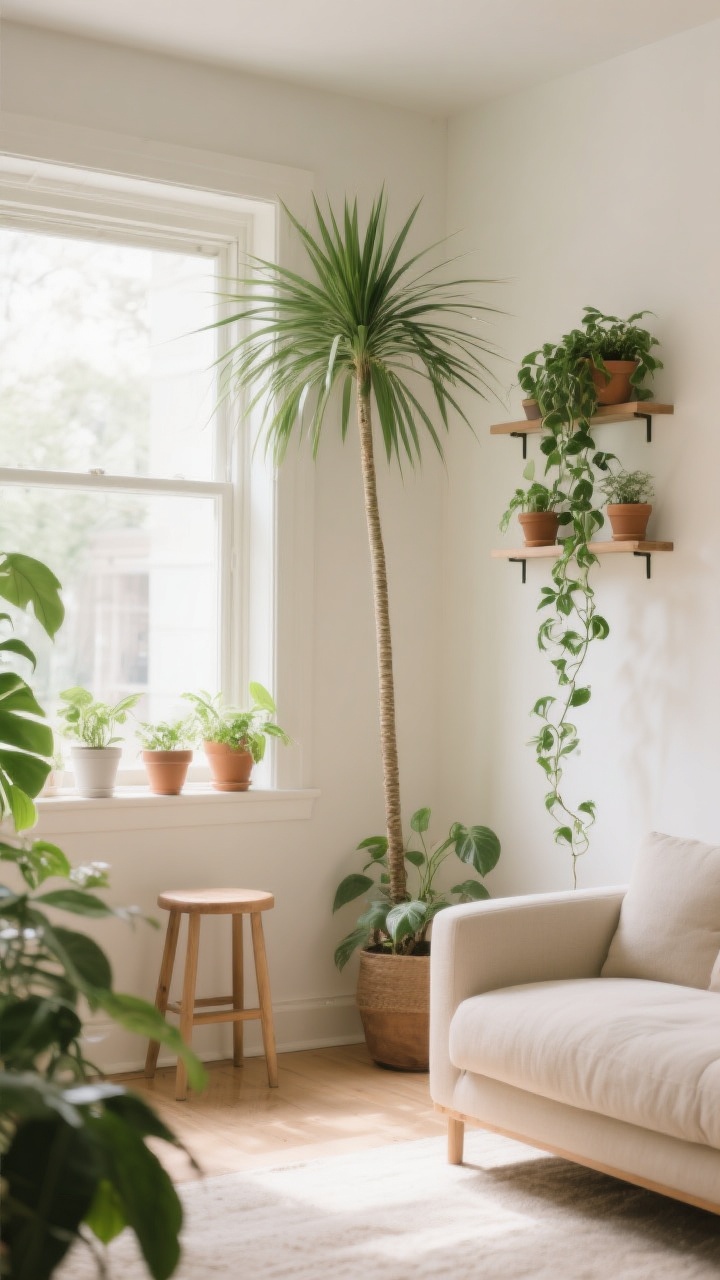
Plants bring color, texture, and that “I have my life together” feeling. Even in tight quarters, a few low-maintenance plants can transform the vibe fast.
Plant Strategy
- Tall, slim plants like a parlor palm or dracaena to elongate the room.
- Trailing plants on shelves—pothos or ivy—or in hanging planters.
- Cluster small pots on a windowsill or stool instead of scattering them everywhere.
No green thumb? Faux plants have gotten very convincing—just dust them. Occasionally.
Quick Mini Makeover Checklist
- Float at least one major piece of furniture.
- Hang curtains high and extend them wide.
- Add one big mirror opposite your best light source.
- Swap in a multipurpose table or storage ottoman.
- Edit surfaces and style in groups of three.
You don’t need a huge space to have major style—just a few smart choices and a good eye. Start with one or two changes from this list and build from there. Your small living room is about to live large, promise.
